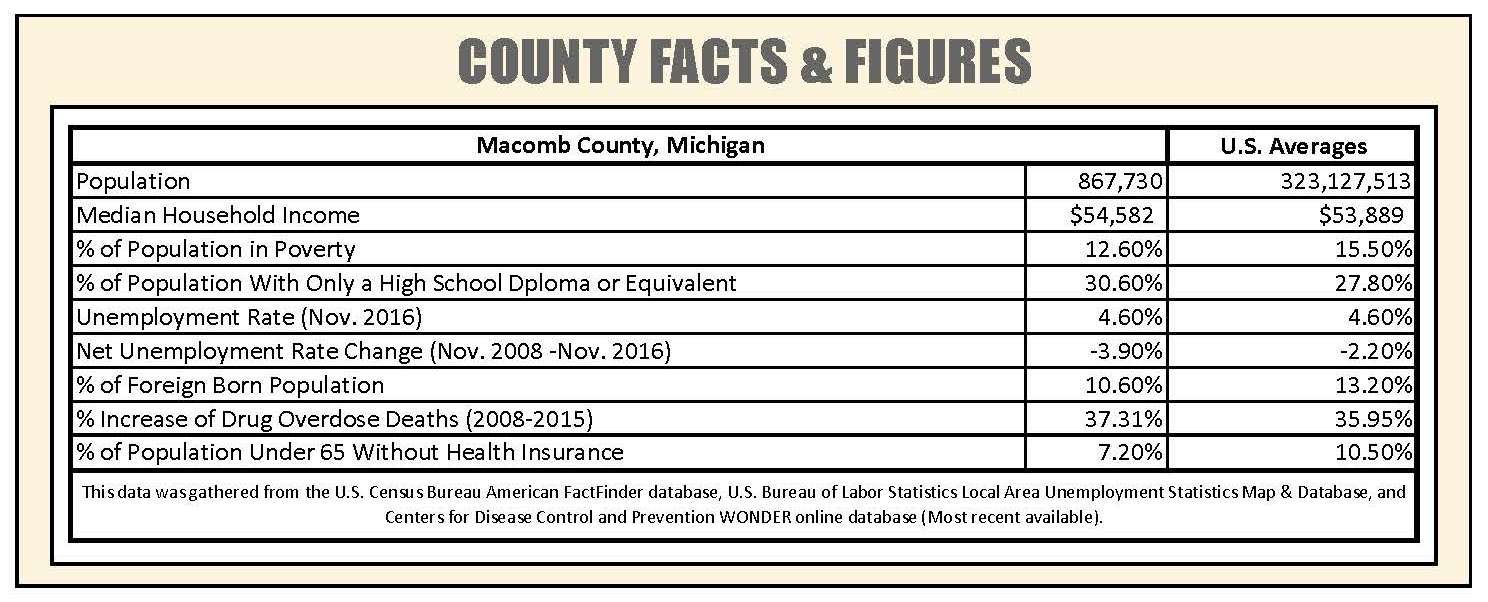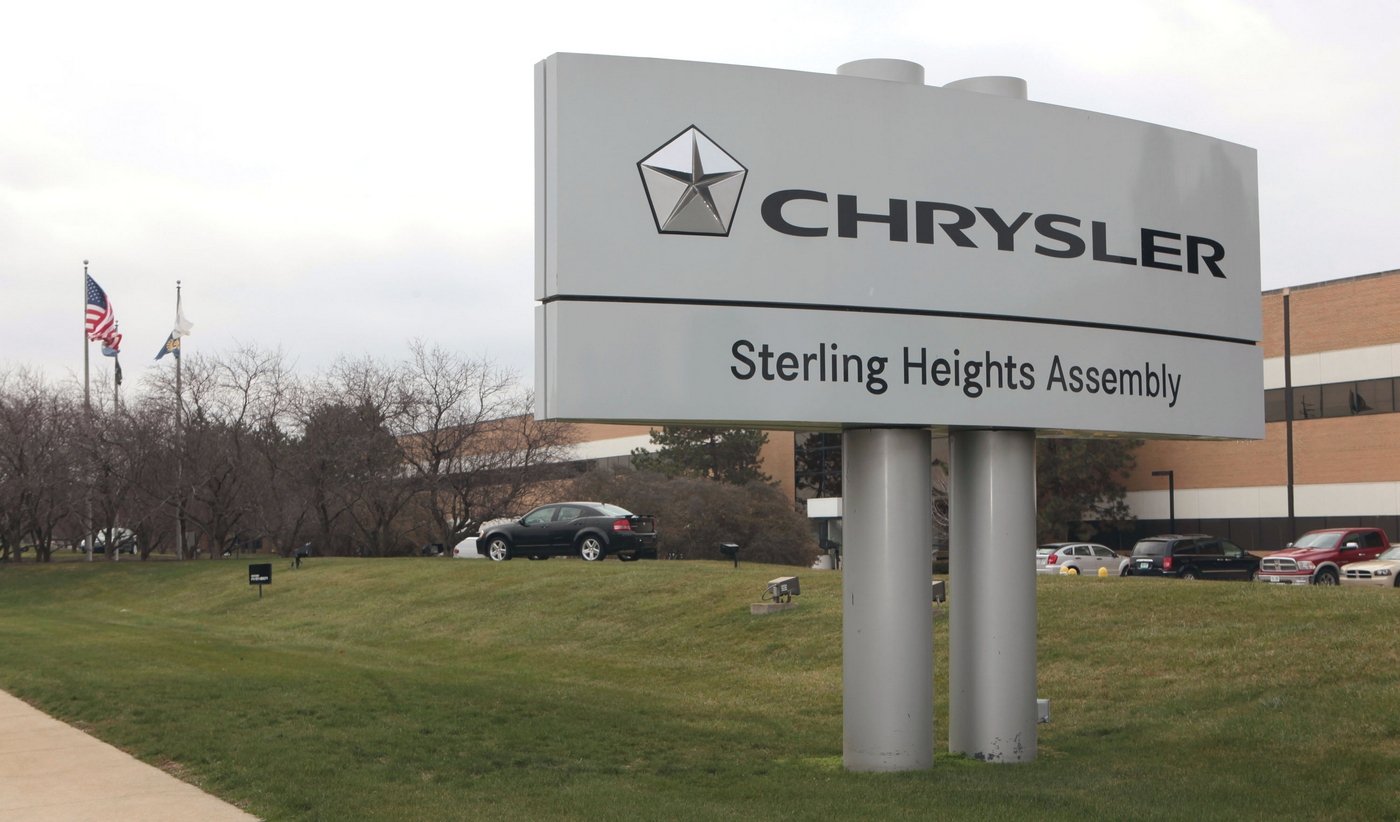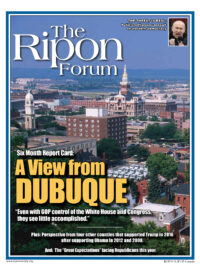“These voters like Trump now for the same reasons they voted for him in the first place: he is not a politician.”

Macomb County has an interesting and important history in American politics. Located northeast of Wayne County, home of Detroit, Macomb was a destination beginning in the 1970s for many white blue-collar workers who were tied to the automobile industry.
A large number of white ethnics who had lived largely on the east side of Detroit – of Italian and Polish heritage especially – moved north into Macomb County communities during this time. Many had left Detroit as racial tensions rose in the late 1960s, which culminated in the 1967 riot in the city. According to the 1970 census, the population of the county was roughly 200,000; by 1980 it was nearly 700,000.
During that time, each of the Big 3 – General Motors, Ford, and Chrysler – built or expanded manufacturing plants in Macomb County. Those who moved to Macomb County were lured by the American Dream. Originally, they found it. Jobs were plentiful, median household income was higher than the national average, the housing market was booming, and recreational areas were bountiful (many residents were hunters and fishermen and had access to hunting land and waterways close by). However, this would change with dynamics including the oil shortage in the 1970s, and a recession that lasted into the early 1980s. This would help pave the way for an historic development in Macomb County.
Much of Trump’s success in Macomb was due to his positions on the economy, which were not aligned with GOP orthodoxy and were more tied to Democratic positions.
Macomb County may be best known as the birthplace of the “Reagan Democrat.” Democratic pollster Stanley Greenberg coined the term after his research there in 1985 and reported his findings in his book Middle Class Dreams. Greenberg conceptualized Reagan Democrats as voters who had traditionally voted for Democratic presidential candidates but felt abandoned by their party, so voted for Ronald Reagan even though they still considered themselves Democrats. Greenberg found that Macomb voters liked Reagan because he was honest, a strong advocate for American interests internationally, was willing to make – and stand by – tough decisions, and was for “the little guy.”[1]

In 1980, Reagan carried Michigan with just under 49% of the vote, but he got nearly 53% in Macomb; in that same election, majorities of Macomb voters voted for Democrats running for U.S. Senate, Michigan attorney general, state board of education, and most other offices. In 1984, Reagan again over-performed in Macomb compared to the rest of the state, as he won 66% of the vote in the county but less than 60% statewide.
In 2016, Reagan Democrats again helped put a Republican candidate over the top in Michigan. Democratic voters in Macomb felt as abandoned by their party as county voters did more than 30 years before. In Donald Trump, they also saw someone who was honest and a strong advocate for American interests. After all the votes were counted, Trump won Michigan’s 16 electoral votes by less than 11,000 (47.25% to 47.03%). He won Macomb, however, by roughly 50,000 votes (53.6% to 42%). Michigan had not voted for a GOP presidential candidate since 1988. However, in 2016, Trump garnered roughly 35,000 more votes than Mitt Romney did in Macomb County alone and Hillary Clinton received roughly 35,000 fewer votes than Barack Obama did in 2012. While this does not indicate that 35,000 residents in Macomb voted for Obama and switched to Trump, there certainly were thousands who did. Much of Trump’s success in Macomb was due to his positions on the economy, which were not aligned with GOP orthodoxy and were more tied to Democratic positions. He was an ardent opponent of the North American Free Trade Agreement (NAFTA) and the Trans-Pacific Partnership (TPP). Hence, the attraction for voters who had been used to supporting Democratic candidates and the connection back to the original Reagan Democrats. In addition, Trump’s populist anti-illegal immigration position resonated with voters who felt that both the economy and public policy had left them behind or had forgotten about them. Many believe that they were hurt by free trade agreements in the past and responded well to Trump’s calls to renegotiate or pull out of them all together.

In 2017, Macomb-based Trump supporters seem in favor of some of the early efforts of the Trump administration. The president’s January 23 memorandum pulling the U.S. out of TPP fulfilled a campaign promise that is certainly popular in Macomb. It is worth noting that the agreement had not yet taken effect since Congress had not approved it. The rhetorical victory, however, remains, as Trump can claim credit for taking action on trade policy. On May 18, Trump’s U.S. trade representative sent official notice to Congress that the administration planned to renegotiate NAFTA. This is also likely a welcome development for many in Macomb County. Even though the notice to Congress did not contain many details and changes policy less than when he had promised to “rip up” NAFTA, Trump supporters can feel he is making enough progress on the issue of trade.
His voters remain supportive, but how long that support lasts is an open question should Democrats be able to find a message that makes a similar connection.
National polling shows that Trump’s supporters largely remain in his corner. In Macomb County, this is also likely still the case. A recent article in the Detroit Free Press quoted the chairman of the Macomb County Republican Party, John Wolfsberger, saying this about Trump’s backing: “The support (among Republicans) is rock solid.”[2] In March 2017, Stan Greenberg and his colleague, Nancy Zdunkewicz, returned to Macomb County to conduct more research.[3] In general, their conclusion was that Trump voters in Macomb remain supportive, but that support may erode somewhat over time.
According to Greenberg and Zdunkewicz’s research, Trump’s supporters do not regret their vote and are sticking with the President. These voters like Trump now for the same reasons they voted for him in the first place: he is not a politician and does not bow to political correctness; he is viewed as a strong leader and someone who can change Washington; is focused on defending the homeland and the border; is going to put “America first” and bring back jobs that Macomb County lost. Greenberg and Zdunkewicz see an opportunity for Democrats if they can connect with these Trump supporters and understand what they are looking for in a leader. They report that these voters may be open to Democrats like Bernie Sanders, Elizabeth Warren and Sherrod Brown, all U.S. Senators, because of their views on trade. Indeed, Sanders won the Michigan presidential primary in 2016. In many ways, his message and Trump’s message on trade were not all that different. They both spoke to the voters of Macomb.
In sum, Trump was able to rekindle the magic of the Reagan Democrats from 35 years before. Trump connected with voters who felt they had been forgotten, especially on the issues they cared about most. His voters remain supportive, but how long that support lasts is an open question should Democrats be able to find a message that makes a similar connection.
David A. Dulio is Professor and Chair of the Political Science Department at Oakland University, while John S. Klemanski is a Professor of Political Science at Oakland University.
_________________________________________________________________
[1] Greenberg reports these focus group comments in Chapter 2 (“Macomb County in the American Mind”) of his book Middle Class Dreams. There are clear connections between Reagan and Trump. Stanley B. Greenberg, “Middle Class Dreams: The Politics and Power of the New American Majority,” revised and updated edition. New Haven, CT: Yale University Press, 1995.
[2] Todd Spangler, “In Michigan, Trump voters still have the president’s back,”
Detroit Free Press, May 27, 2017 http://www.freep.com/story/news/local/michigan/2017/05/28/michigan-donald-trump-voters/344246001/)
[3] Their research findings can be found in a memo entitled, “Macomb County in the Age of Trump: Report from focus groups with Independent & Democratic Trump voters in Macomb County,” available at: http://rooseveltinstitute.org/wp-content/uploads/2017/03/Dcor_Macomb_FG-Memo_3.9.2017_v8-2.pdf. More on Greenberg’s work in Macomb County can be found at: https://www.greenbergresearch.com/macomb/.




